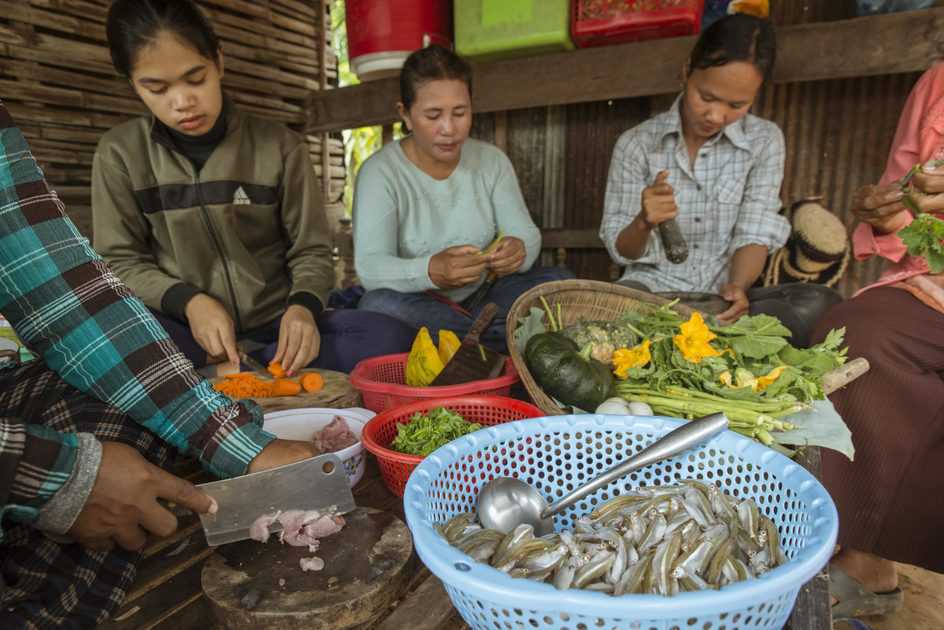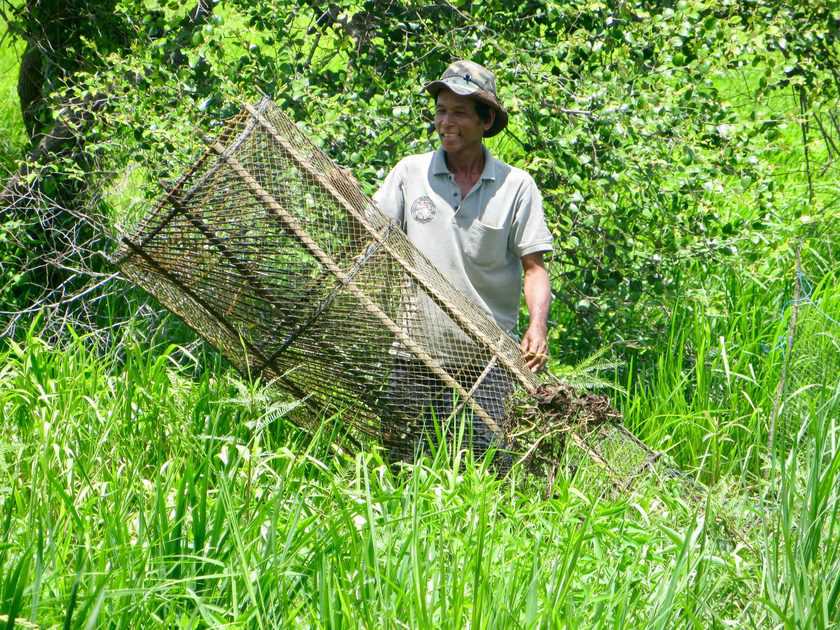
| CGIAR Research Program CGIAR Research Program on Fish Agri-food Systems (FISH) |
Partners WorldFish The Fisheries Administration (FiA) |
Geographic scope Cambodia |
| Contact person Peter Jackson, WorldFish |
Scientists at the CGIAR Research Program on Fish Agri-food Systems (FISH) have proven that well-managed community fish refuges (CFRs) can significantly improve fish productivity in rice fields.
A challenge faced by many caregivers in rural Cambodia is making sure their children receive sufficient nutritious food. Missing out on nutritious food at a young age can have long-term impacts on physical and cognitive development. Acute malnutrition, stunting and micronutrient deficiencies have been estimated to cost Cambodia up to USD 266 million annually, or 1.7% of the country’s gross domestic product. Fish is one of the best sources of nutrients such as iron, zinc, calcium and vitamin A, which are essential for healthy growth and development.
Through the United States Agency for International Development (USAID)-funded Feed the Future Cambodia Rice Field Fisheries II (RFF II) project, FISH is working to address multiple causes of malnutrition in an integrated way. The project promotes wild fish conservation and improved management of 140 CFRs, making more nutritious fish available to be caught in the surrounding areas.

CFRs are natural or human-made ponds that hold water throughout the year and provide a dry season refuge for brood fish. In the dry season, these refuges become disconnected from permanent natural water bodies. In the wet season, when water levels rise, the fish migrate out of the CFRs to the rice fields and floodplains to spawn and feed.
Each CFR in Cambodia is managed by a trained committee who improve, protect and manage the CFR. Proof of concept (2015) showed annual average fish catch by the poorest 20% of households increased by 71%. The Cambodian Government officially recognizes and supports widespread uptake of CFRs for food and water security goals.
By 2021, more than 296,000 people are expected to have benefited from the project’s integrated approach to improving food and nutrition security.
Fishing is prohibited year-round in the CFRs, but rice fields become open access fishing grounds when inundated. These fisheries constitute up to 28% of the wild capture fisheries in Cambodia, and are seen as a promising sub-sector to increase fish catches and meet the domestic demand for food. Research by FISH partner WorldFish shows that well-managed CFRs can significantly improve fish productivity of the rice field environment.
Despite their importance to Cambodia’s rural livelihoods, rice field fishery systems were largely neglected as a focus of detailed research until the advent of the CFR approach.
Due to their accessibility to many nearby households, these improved environments are an important source of nutritious food. They are particularly beneficial for lactating mothers and other caregivers who experience poverty and vulnerability.

WorldFish monitoring shows that people supported by the project are applying good practices to conserve and increase fish stocks and improve nutrition. In one year, the amount of fish caught has increased by 30%, and the proportion of children under five eating small fish has increased by 50%.
By 2021, more than 296,000 people are expected to have benefited from the project’s integrated approach to improving food and nutrition security.
Header photo: A smallholder fisherman casts a net in Cambodia. Photo by WorldFish




